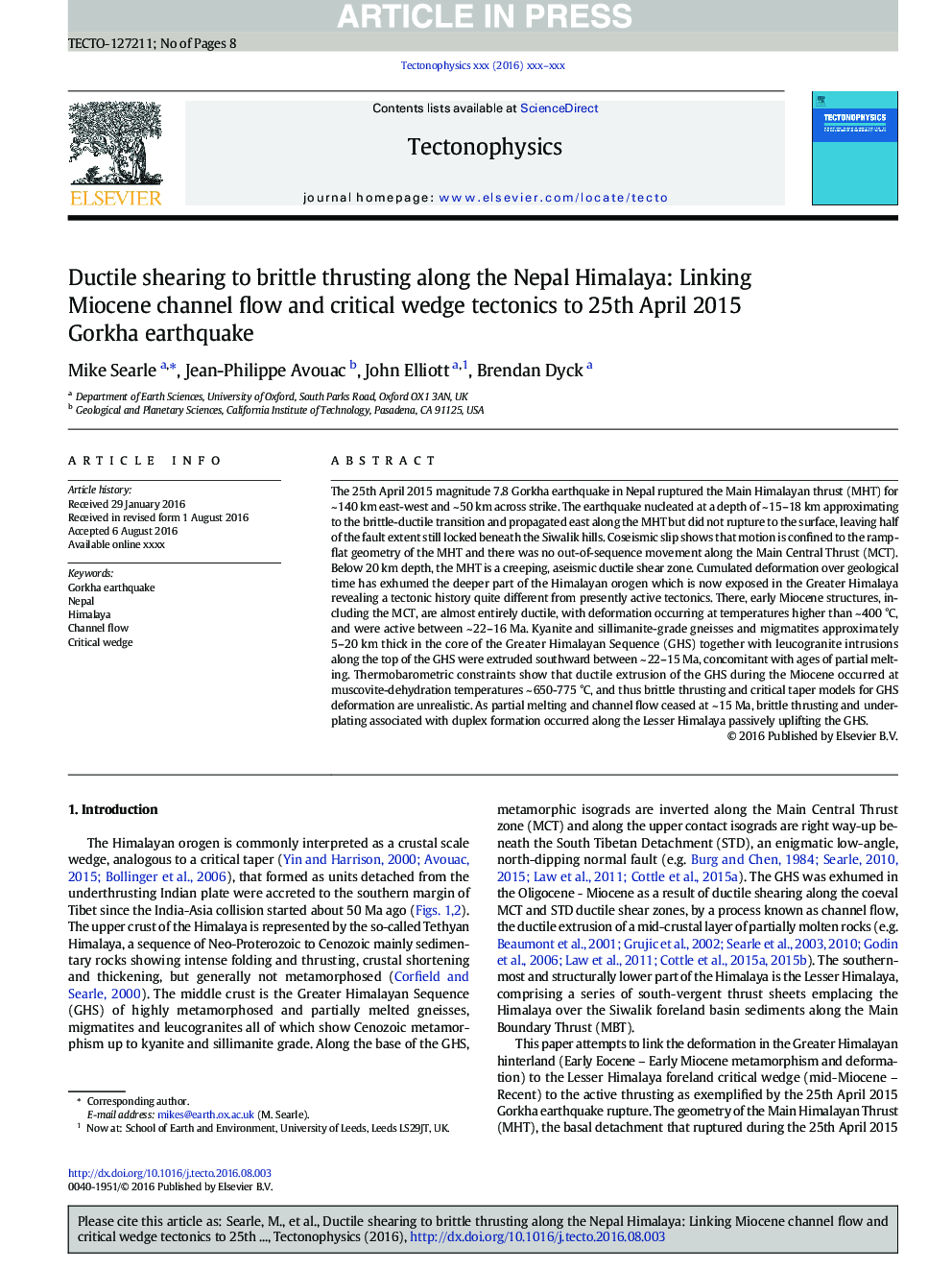| کد مقاله | کد نشریه | سال انتشار | مقاله انگلیسی | نسخه تمام متن |
|---|---|---|---|---|
| 5781614 | 1636693 | 2017 | 8 صفحه PDF | دانلود رایگان |
عنوان انگلیسی مقاله ISI
Ductile shearing to brittle thrusting along the Nepal Himalaya: Linking Miocene channel flow and critical wedge tectonics to 25th April 2015 Gorkha earthquake
ترجمه فارسی عنوان
انشعاب چسبیده به ریزش مو در هلیمالی نپال: اتصال جریان کانال میوسن و تکتونیک های جغرافیایی بحرانی به 25 فوریه 2015 زلزله گرخا
دانلود مقاله + سفارش ترجمه
دانلود مقاله ISI انگلیسی
رایگان برای ایرانیان
کلمات کلیدی
موضوعات مرتبط
مهندسی و علوم پایه
علوم زمین و سیارات
فرآیندهای سطح زمین
چکیده انگلیسی
The 25th April 2015 magnitude 7.8 Gorkha earthquake in Nepal ruptured the Main Himalayan thrust (MHT) for ~ 140 km east-west and ~ 50 km across strike. The earthquake nucleated at a depth of ~ 15-18 km approximating to the brittle-ductile transition and propagated east along the MHT but did not rupture to the surface, leaving half of the fault extent still locked beneath the Siwalik hills. Coseismic slip shows that motion is confined to the ramp-flat geometry of the MHT and there was no out-of-sequence movement along the Main Central Thrust (MCT). Below 20 km depth, the MHT is a creeping, aseismic ductile shear zone. Cumulated deformation over geological time has exhumed the deeper part of the Himalayan orogen which is now exposed in the Greater Himalaya revealing a tectonic history quite different from presently active tectonics. There, early Miocene structures, including the MCT, are almost entirely ductile, with deformation occurring at temperatures higher than ~ 400 °C, and were active between ~ 22-16 Ma. Kyanite and sillimanite-grade gneisses and migmatites approximately 5-20 km thick in the core of the Greater Himalayan Sequence (GHS) together with leucogranite intrusions along the top of the GHS were extruded southward between ~ 22-15 Ma, concomitant with ages of partial melting. Thermobarometric constraints show that ductile extrusion of the GHS during the Miocene occurred at muscovite-dehydration temperatures ~ 650-775 °C, and thus brittle thrusting and critical taper models for GHS deformation are unrealistic. As partial melting and channel flow ceased at ~ 15 Ma, brittle thrusting and underplating associated with duplex formation occurred along the Lesser Himalaya passively uplifting the GHS.
ناشر
Database: Elsevier - ScienceDirect (ساینس دایرکت)
Journal: Tectonophysics - Volumes 714â715, 13 September 2017, Pages 117-124
Journal: Tectonophysics - Volumes 714â715, 13 September 2017, Pages 117-124
نویسندگان
Mike Searle, Jean-Philippe Avouac, John Elliott, Brendan Dyck,
